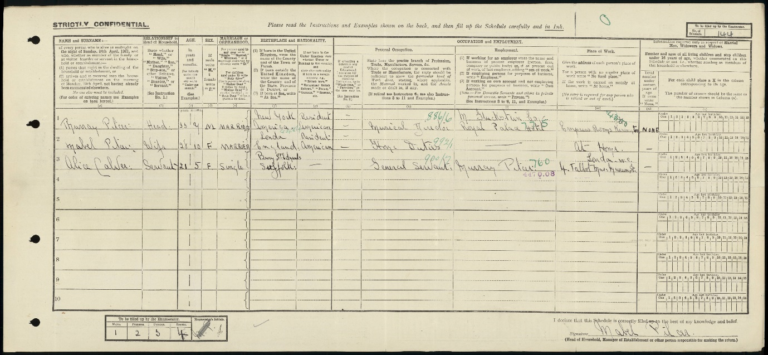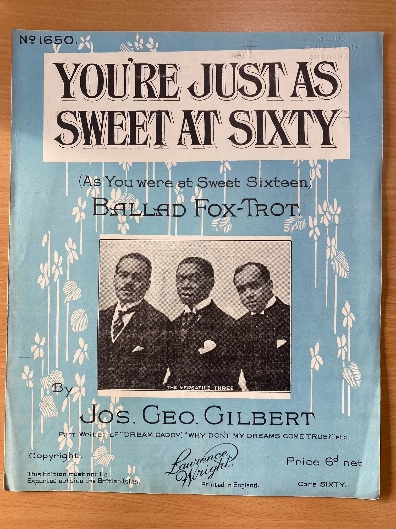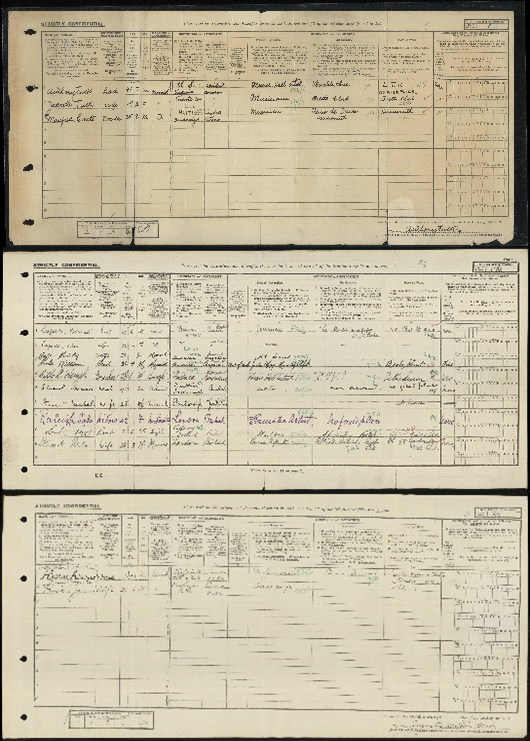This blog article is part of the 20sPeople season – a season of exhibitions, activities and events from The National Archives that explores and shares stories that connect the people of the 2020s with the people of the 1920s.
There can be no doubt that the 1921 Census has a lot to offer for those interested in the Jazz Age. 1919 is often understood as a key year for jazz in Britain, as the five-piece Original Dixieland Jazz Band from New Orleans and the larger Southern Syncopated Orchestra from New York were both resident – I will delve further into their legacy in a further blog.
The idea of jazz, if not its musical characteristics, was already quite well-established in Britain by 1919; it was often seen in print as a verb (‘to jazz’, meaning to dance in a modern way) or adverb (‘jazzy’, meaning up-to-date). However, the infrastructure for the development of jazz was in its infancy; this was before the introduction of BBC radio, while records and gramophones were relatively expensive. In addition, critical and instructive writing on this new music, to which British authors and journalists would contribute significantly, was in limited supply. Consequently, although jazz clearly represented the ‘spirit of the age written in the music of the people’ (in the words of R W S Mendl in his 1927 book, The Appeal of Jazz), it was a while before it was fully understood as a genre of music.

Jazz ‘arrived’ as part of a well-established trend for importing entertainment from the USA, dominated in the previous century by minstrel shows and immediately preceded in the 20th century by black musical theatre, American-style revues and ragtime. American-born drummer Murray Pilcer came to Britain in 1916 and recorded four sides with his Jazz Band in January 1919, pre-dating the Original Dixieland Jazz Band’s visit by a few months. Although the outward similarities of his output to what we would consider to be jazz today are minimal, this is illustrative of the relatively free application of the term to bands and music at this point. A few musicians in the census specifically list Pilcer as their employer; newspaper coverage indicates that his band was in demand to play at dances in Britain, but by the end of the year they were resident at his brother Harry’s club in Paris.

The 1921 Census is a reminder that the presence of American musicians in Britain pre-dated jazz, and also that this was a period of transition, with new arrivals even boarding with those who were more established. In 1921, Anthony (Tony) Tuck, a member of The Versatile Three (sometimes The Versatile Four), a banjo-based group present on the London scene since before the First World War, was living in St Pancras with his wife, Jeanette. Their lodger was Manfred Coxito, a member of the Jazz Kings, a small off-shoot of the Southern Syncopated Orchestra. The Versatile Three’s pianist, Charles Wenzel Mills, and banjo/saxophone player Adolphus (Gus) Haston lived down the road in separate addresses in Bloomsbury.
The Versatile Three had made an impression on the smart set with their often-vigorous performances of pre-jazz popular music and made their first recordings in London in 1916 (such as their spirited rendition of ‘Down Home Rag’). However, they were supremely adaptable to the latest trends; Haston took up the saxophone – a necessity both visually and sonically in post-war popular music. In their work around the time of the census, the wilder percussive drumming and banjo playing of their wartime recordings was toned down (such as their 1920 recording of ‘Cuban Moon’).

Further examples of continuity can be seen in relation to Ciro’s Club on Orange Street which, incredibly enough, was constructed and opened during the War as a playground for the rich and famous. Dan Kildare’s Clef Club Orchestra were brought over from New York to provide the music for dancing and proved extremely successful. Ciro’s was eventually closed at the height of the war in response to protests, re-opening in 1919 with music supplied by a band called The White Lyres, formed by American musicians in Paris, who then returned to France. Kildare was back in residence in 1920 but, in a tragic turn of events relating to personal and marital difficulties, killed his wife then himself in June 1920. The White Lyres were re-engaged and at the point of the census can be found living together in a boarding house in Gower Street, listing the club as their place of employment. The White Lyres’ founders, Americans Bill Henley and Kelvin Keech, as well as bandmates Tommy Townsend and Daniel Stern, can be found in the census. Before long, the band also departed for Paris. (For more on the White Lyres, see www.jazzageclub.com/the-white-lyres/5951/#more-5951).
Catherine Tackley is Professor of Music at the University of Liverpool and a Trustee of the National Jazz Archive. Learn more about their work at nationaljazzarchive.org.uk.
Jazz music was popular in the clubs and bars of 1920s Britain, but not everyone approved of the growing nightlife scene. Read more here: Jix’s war on nightclub evils.
Discover one of the biggest personalities in 1920s nightlife, Kate Meyrick, and her infamous nightclub: The 43: the most notorious club of the decade.
20sPeople at The National Archives
20sPeople at The National Archives explores and shares stories that connect the people of the 2020s with the people of the 1920s. Accompanying the release of the 1921 Census of England and Wales, 20sPeople shows what we can learn by connecting with those who have gone before us. Find out more at nationalarchives.gov.uk/20speople.


I would like to locate a 52 part series from BBC Radio, broadcast by Russell Davis, “Jazz Century”.